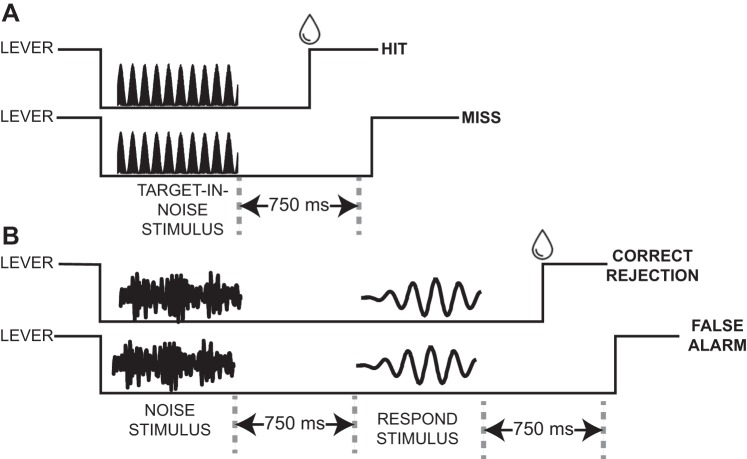Fig. 2.
Schematics of the target-in-noise task. During target-in-noise trials (A), a 750-ms auditory stimulus was presented; the “target-in-noise” stimulus was a tone burst that was presented with comodulated noise (100% sinusoidal amplitude modulated noise). If a monkey released a touch-sensitive lever within 750 ms of offset of this stimulus, we classified the trial as a “hit” and the monkey received a reward (water drop; top). If he did not release the lever or released it after 750 ms (as depicted), it was classified as a “miss” (bottom). During noise-only trials (B), a 750-ms comodulated noise burst was first presented. The monkeys had to maintain their grip on the lever during presentation of the noise and for an additional 750 ms. Next, a “respond” stimulus (i.e., a tone burst) was presented. If a monkey released the lever within 750 ms of offset of the respond stimulus, this was classified as a “correct rejection” and the monkey received a water reward (top). If he did not release the lever or released it after 750 ms (as depicted), this was a “false alarm” (bottom). The schematics of the different stimuli are cartoons and are not meant to represent the actual voltage-time waveforms of the tone-in-noise, noise-only, and respond stimuli.

